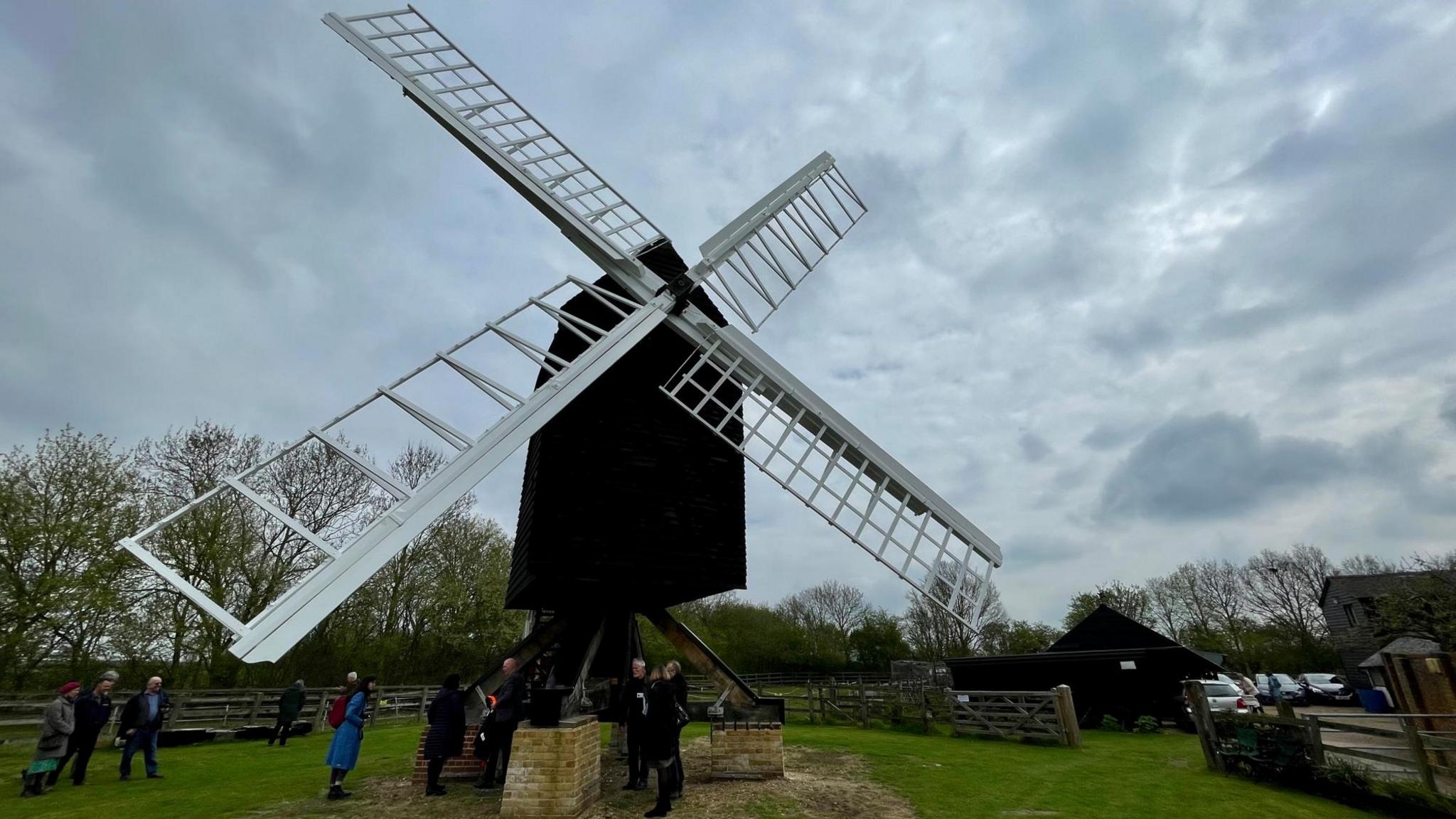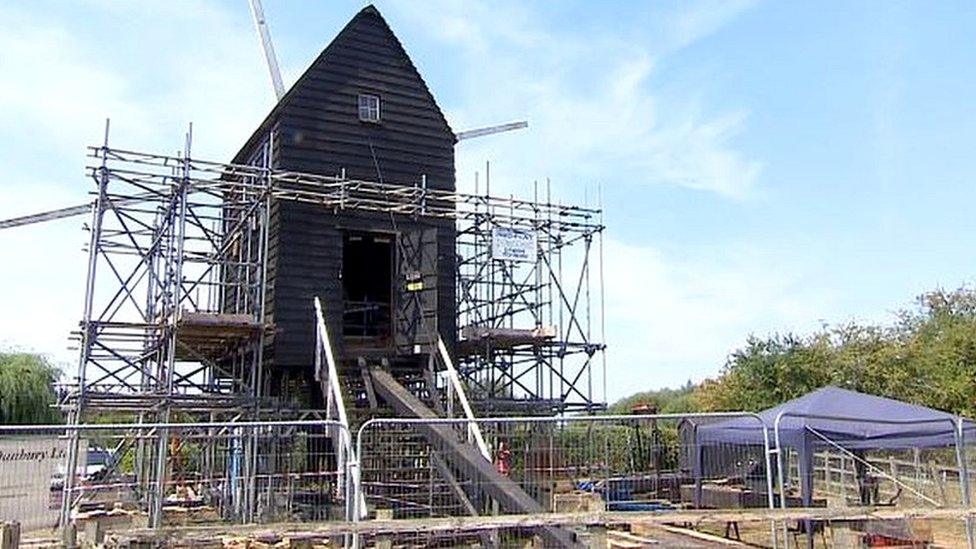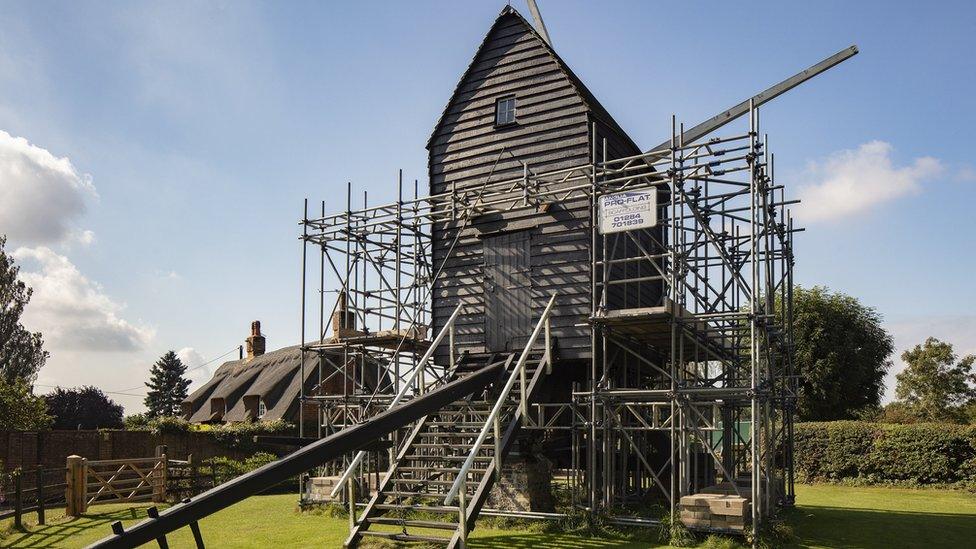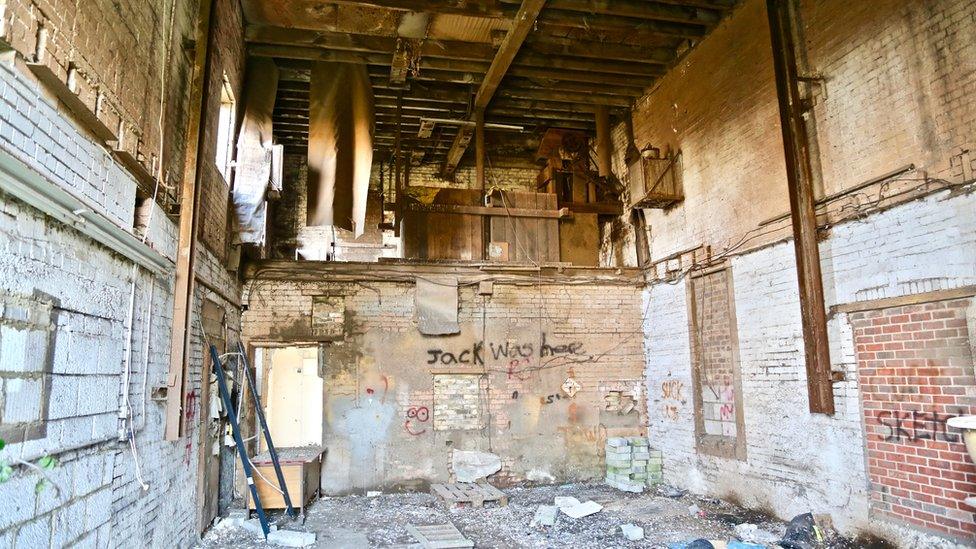Repaired 500-year-old windmill reopens to public

The main body of Bourn Windmill rotates on a vertical post so the sails can be best positioned to catch the wind
At a glance
Bourn Windmill in Cambridgeshire, one of the oldest in the UK, has reopened after three years of repair work
In early 2020, extensive rot was found in its supporting beams and it was closed
The restoration was a significant project carried out by a team of specialist experts
Visitor open days will start on 13-14 May
- Published
A 500-year-old windmill has reopened three years after being closed for repairs to its rotting support structure.
Bourn Windmill in Cambridgeshire was closed in early 2020 when extensive rot was found in the post-mill's supporting beams.
It had been placed on the Heritage at Risk list, external because of possible collapse and its owner, Cambridge Past, Present & Future (CPPF), external, has led the fundraising to restore it.
Historic England called it a "nationally important landmark". Open days resume in May.
Bourn Windmill is an open trestle post mill and is designated as a Grade I Ancient Monument.
It is one of five surviving trestle post-mills in Cambridgeshire. There are about 50 left in the UK.
Post-mills rotate so the sails are facing in the best direction to catch the wind.
The earliest written record of the mill dates back to1636, but a recent study by Historic England found that its main post was most likely felled in the first half of the 16th Century.
CPPF, the charity that runs the mill, believes it to be the oldest windmill of its kind in the country.

Visitor open days at Bourn Windmill, between Bourn and Caxton, will resume on 13 and 14 May
A team of specialists suspended the main body of the mill for six months while the large supporting structures were replaced.
The work was financed by the National Lottery Heritage Fund, Historic England, The Pilgrim Trust and The Society for the Protection of Ancient Buildings.
James Littlewood, chief executive of CPPF, said the restoration was a "real team effort".
"Skilled craftsmen have done an amazing job in weather ranging from a blistering 40C (104F) to a freezing -10C (14F)," he said.
"The mill volunteers have been wonderful at raising awareness of the mill’s plight and helping to encourage donations."
Historic England's Heritage at Risk architect, Sarah Morrison, said: "We’re pleased to have supported the saving of this nationally important landmark, which means so much to its local community."
The mill grounds are open again, with visitor open days resuming on National Mills Weekend (13-14 May), and subsequently taking place once a month until September.
Visitors can have a go at turning the mill themselves and be inside the mill when it is turning.
Find BBC News: East of England on Facebook, external, Instagram, external and Twitter, external. If you have a story for us, email eastofenglandnews@bbc.co.uk, external
Related topics
- Published16 August 2022

- Published4 November 2021

- Published13 October 2020

- Published8 August 2020
